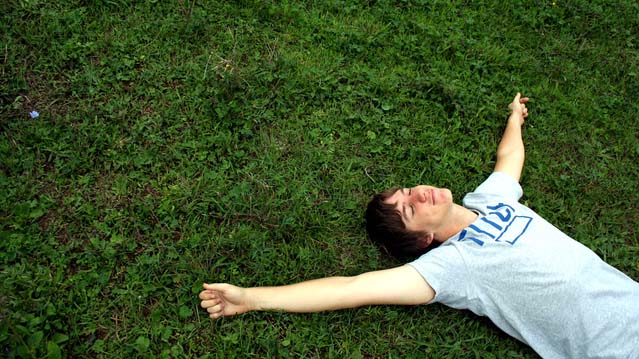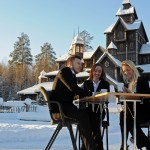Become A Great Event Planner – Learn To Be Creative
“Creativity is intelligence having fun.” – Albert Einstein
Creativity is the mother of all great and innovative ideas. By utilizing a creative thought process, people can find hidden patterns, alternative solutions to complex problems, or create new concepts and inventions. But the road to a creative way of thinking can be long but rewarding.
Creativity is a wide term, but for this article, we define it as the act of turning new and imaginative ideas into reality. The human mind is extremely plastic, but with enough dedications, the right environment and time, even you can become a creative soul. Here are a few pointers on how to set up yourself to adapt the creative style of thinking.
Related post: 7 qualities every great event planner should possess
Restrict yourself
Creative problem-solving often comes from restrictions. Dr. Seuss wrote the book “Green Eggs and Ham” after a bet with his editor, to write an entire book with less than 50 different words. Restrictions will often have you think of alternative ways to fix a problem. Try limiting the project, and you may see the benefits of the brain trying to come up with creative solutions to finish an event program based on the restrictions.
Creative example: Client X does not want anyone wearing name badges around their necks or clipped to their clothes, but he still wants attendees having nametags. Being creative under restriction, the event planner quickly comes up with the idea of a nametag attached to a colorful rubber wristband or headband. Now attendees will really look at each other.
Break the rules!
Contradicting the previous point, go ahead and break a few rules. Creativity often suffers due to end goals being too restricted, or due to end goals being shifted too often. Also telling employees that certain methods are not welcome, will always kill creativity. Forgot the “We do things by the book”, and break the rules (without violating any laws), and go crazy with new methods, ideas, and solutions. There might be a hidden solution that can improve the overall workflow of the organization.
Creative example: Company C has a rule: always wear a suit when picking up clients from the airport. A creative and daring event planner would break the rule by dressing up as an animal or in a very colorful suit, and leave an amusing and a lasting impression on the clients.
Re-write the problem
Creative people tend to re-write the problem before working on finding a solution. This means instead of thinking about a cut and dry end goal, they take a step back, examine the problem in different ways, before problem-solving. If you are stuck because of a generic problem, try to re-write the problem to a more meaningful angle.
Creative example: Instead of thinking “What can I write to get a lot of tweets and likes?”, I think of “What sort of material can be educational to our readers?”. By re-writing the problem, I have focused on an angle that is meaningful to the readers and future event planners.
Time to Daydream
Every creative person will tell you “Take time to think creatively and innovative!”. Google asks their teams to allocate 20% of their time to creative thinking or innovative projects. But often, when we are ready to innovate, it still fails to produce any new ideas. The problem is the lack of time to daydream. Therefore, the rule should be to allocate time, where employees can daydream and think creatively. Some of your best ideas probably came from a quiet moment alone.
Creative example: The year is 2014. Event Manager Michael is daydreaming about how he can get the attention of exhibition attendees, who walks past his booth with their eyes fixated to their smartphones. He pitches the idea of a “beacon” that will transmit content to their mobiles when they get close to his exhibition booth. Sure enough, this idea is just the beginning of a new business adventure.
Bounce Ideas off others
Even the most brilliant inventor needs people to discuss or “bounce” new creative ideas or innovations. As an event planner you should bounce ideas off a coworker, a friend or a mentor, and ask what works, what does not work, what would you do instead? Embrace the both the positive and negative constructive feedback you receive, and make improvements to your original idea, until it is perfected. Event planners should not be satisfied with mediocre. Remember to have a diverse group of colleagues and friends. If you are surrounded by like-minded people, you will not get constructive feedback from other perspectives. A group of people with different backgrounds, cultures, ideology, etc. will give a more diverse set of questions and answers to improve your idea.
Creative example: Company X needs a keynote speaker. You are thinking a comedian could liven up the attendees during the lengthy presentations. You pitch the idea to your mentor, and she suggests that you should bring professor Einfun since he has a natural talent to combine educational speeches with amusing twists.
Conclusion on Creativity
Creativity is like a plant seed. You cannot force it to grow, but you can nurture it, put it in the right conditions, and let it grow faster than other seeds. Creativity cannot and should not be forced. Give yourself and employees the right tools and conditions to improve their creative thinking, and reap the benefits of fresh ideas and solutions to existing or future problems. A business who is constantly trying to nurture new ideas will always stay young and fresh. At Hadler DMC, planning a meeting, incentive, conference, or event is cut and dry. We pride ourselves in tailoring programs to the needs and wishes of our clients and apply our creativity to solve external problems before they become relevant.
Contact us now, and hear how we can use our creativity, to give an out-of-the-box experience





